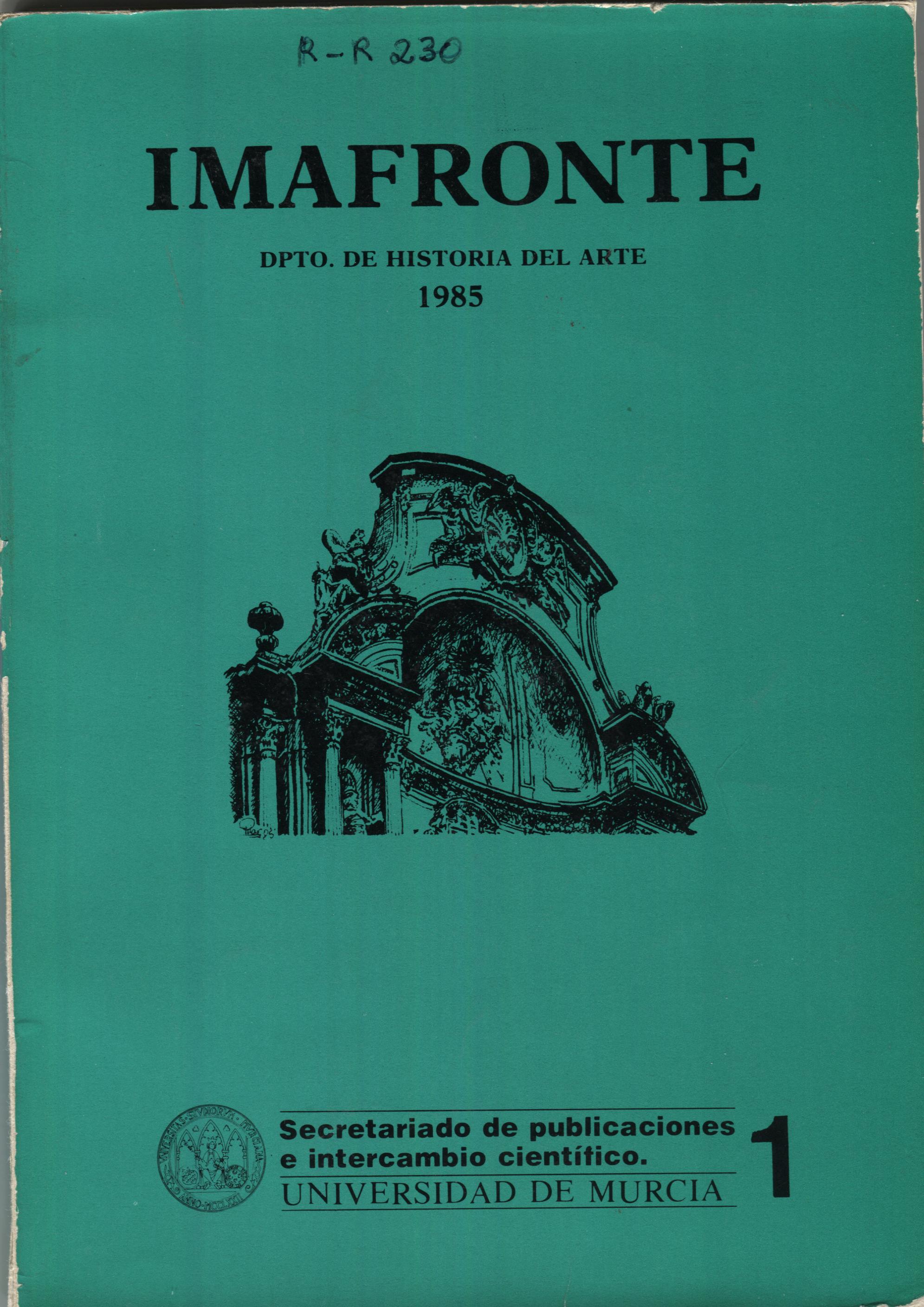EL TEMPLO DE SANTA MARÍA DE GRACIA DE CASTAGENA: UN PROYECTO INACABADO
Resumen
This temple is a prime example of a situation in which, due to financial problems carrsed by the confrontation of two different and contrasting ideas, a project for the construction of a building was never fully developed, despite being originally favoured by Cardinal Belluga himself albeit with certain reservations. On the one hand there were those who nursed the hope of achieving ends that had nothing to do with the material construction of a temple. i..e. the use of the cathedral floor to this enable them to recover the episcopal seat that had been lost towards the end of XIII century, whereas on the other hand there was the oposition of a chapter who wished to maintain the then present system of economic, financial and ecclesiastical control, justifying the need for a diocesan unity which had been interrupted centuries before with the dismemberment of the Bishopric of Orihuela. The final result of such projects, left in tire charge of an unknown architect who took into account none what soeier of the usual basilican models that were to be found in the Kingdom. was a church of large proportions, but with obvious defects in its execution (consequences of the difficulties involved regarding finance and sponsorship, and of the openly hostile confrontations that took place). All of these factors helped to hinder the carrying out of coherent plans regarding desing, proportions and space, so creating the consequent lack of personality that today can be seen in the old temple of Santa Maria de Gracia.Descargas
-
Resumen234
-
PDF158
Las obras que se publican en esta revista están sujetas a los siguientes términos:
1. Los autores ceden de forma no exclusiva a la revista los derechos de explotación (reproducción, distribución, comunicación y transformación).
2. Las obras que se publican en esta revista están sujetas a la licencia Attribution-ShareAlike 4.0 International (CC By SA 4.0). Por lo que se pueden copiar, usar, difundir, transmitir y exponer públicamente, siempre que:
i) se cite la autoría y la fuente original de su publicación (revista, editorial y URL de la obra), permitiendo así su reconocimiento.
ii) se permite remezclar, transfromar o crear a partir del material mientras se mantenga la misma licencia del original.
3. Condiciones de auto-archivo. Se permite y se anima a los autores a difundir electrónicamente las versiones pre-print (versión antes de ser evaluada) y/o post-print (versión evaluada y aceptada para su publicación) de sus obras antes de su publicación, ya que favorece su circulación y difusión más temprana y con ello un posible aumento en su citación y alcance entre la comunidad académica. Color RoMEO: verde.
























